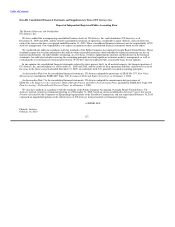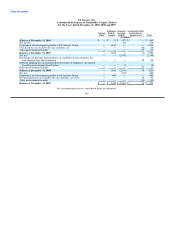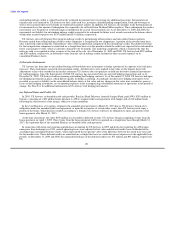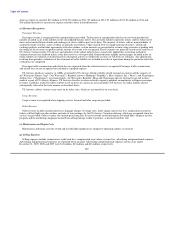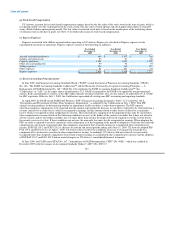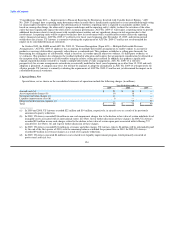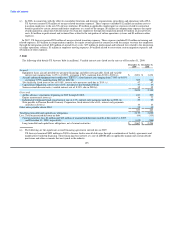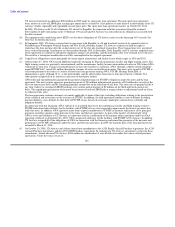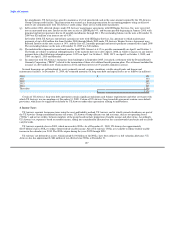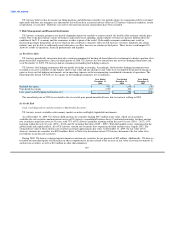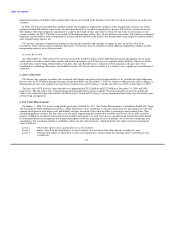US Airways 2009 Annual Report Download - page 123
Download and view the complete annual report
Please find page 123 of the 2009 US Airways annual report below. You can navigate through the pages in the report by either clicking on the pages listed below, or by using the keyword search tool below to find specific information within the annual report.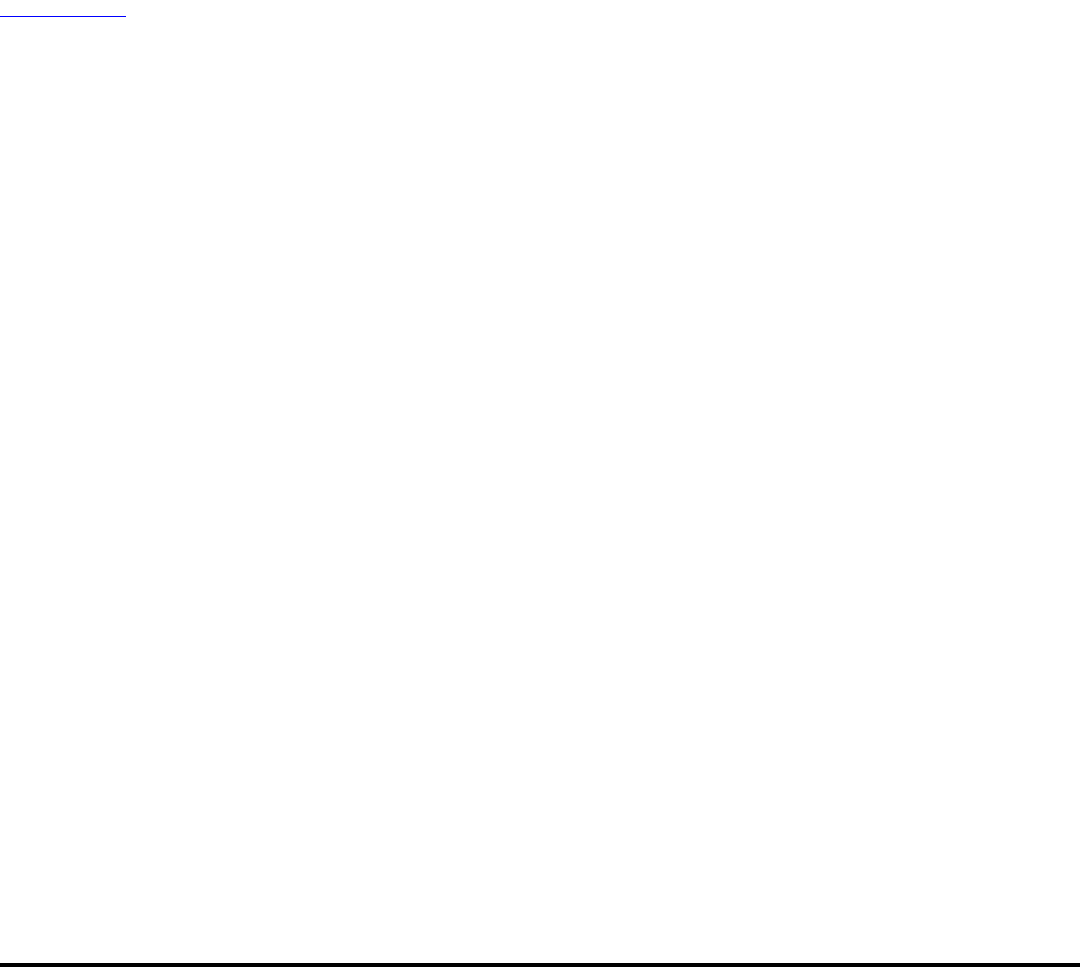
Table of Contents
outstanding mileage credits is valued based on the estimated incremental cost of carrying one additional passenger. Incremental cost
includes unit costs incurred by US Airways for fuel, credit card fees, insurance, denied boarding compensation, food and beverages as
well as fees incurred when travel awards are redeemed on partner airlines. In addition, US Airways also includes in the determination of
its incremental cost the amount of redemption fees expected to be collected from Dividend Miles members. These redemption fees reduce
incremental cost. No profit or overhead margin is included in the accrual of incremental cost. As of December 31, 2009 and 2008, the
incremental cost liability for outstanding mileage credits expected to be redeemed for future travel awards accrued on the balance sheets
within other accrued expenses was $130 million and $151 million, respectively.
US Airways also sells frequent flyer program mileage credits to participating airline partners and non-airline business partners.
Revenue earned from selling mileage credits to other companies is recognized in two components. A portion of the revenue from these
sales is deferred, representing the estimated fair value of the transportation component of the sold mileage credits. The deferred revenue
for the transportation component is amortized on a straight-line basis over the period in which the credits are expected to be redeemed for
travel as passenger revenue, which is currently estimated to be 28 months. The marketing component, which is earned at the time the
miles are sold, is recognized in other revenues at the time of the sale. As of December 31, 2009 and 2008, US Airways had $212 million
and $240 million, respectively, in deferred revenue from the sale of mileage credits included in other accrued expenses on its
consolidated balance sheets.
(l) Derivative Instruments
US Airways has from time to time utilized heating oil-based derivative instruments to hedge a portion of its exposure to jet fuel price
increases. These instruments consisted of no premium collars. All derivatives were marked to fair value on the balance sheet with
adjustments to fair value recorded in the income statement. US Airways does not purchase or hold any derivative financial instruments
for trading purposes. Since the third quarter of 2008, US Airways has not entered into any new fuel hedging transactions and, as of
December 31, 2009, US Airways had no remaining outstanding fuel hedging contracts. As of December 31, 2008, US Airways had open
fuel hedging instruments in place, which did not qualify for hedge accounting. Accordingly, the derivative hedging instruments were
recorded as an asset or liability on the consolidated balance sheets at fair value and any changes in fair value were recorded as gains or
losses on fuel hedging instruments, net in operating expenses in the accompanying consolidated statements of operations in the period of
change. See Note 5(a) for additional information on US Airways' fuel hedging instruments.
(m) Deferred Gains and Credits, Net
In 2005, US Airways' co-branded credit card provider, Barclays Bank Delaware, formerly Juniper Bank, paid AWA $150 million in
bonuses, consisting of a $20 million bonus pursuant to AWA's original credit card agreement with Juniper and a $130 million bonus
following the effectiveness of the merger, subject to certain conditions.
In the event Barclays, at its option, terminates the amended agreement prior to March 31, 2013 due to US Airways' breach of its
obligations under the amended credit card agreement, or upon the occurrence of certain other events, then US Airways must repay a
portion of the bonus, which declines monthly according to a formula. US Airways will have no obligation to repay any portion of the
bonus payments after March 31, 2013.
At the time of payment, the entire $150 million was recorded as deferred revenue. US Airways began recognizing revenue from the
bonus payments on April 1, 2009. The revenue from the bonus payments will be recognized on a straight-line basis through March 31,
2017, the expiration date of the amended Barclays co-branded credit card agreement.
In connection with fresh-start reporting and purchase accounting for US Airways in 2005 and fresh-start reporting for AWA upon
emergence from bankruptcy in 1994, aircraft operating leases were adjusted to fair value and deferred credits were established in the
accompanying consolidated balance sheets, which represented the net present value of the difference between the stated lease rates and
the fair market rates. These deferred credits are amortized on a straight-line basis as a reduction in rent expense over the applicable lease
periods. At December 31, 2009 and 2008, the unamortized balance of the deferred credits was $74 million and $93 million, respectively.
US
121



